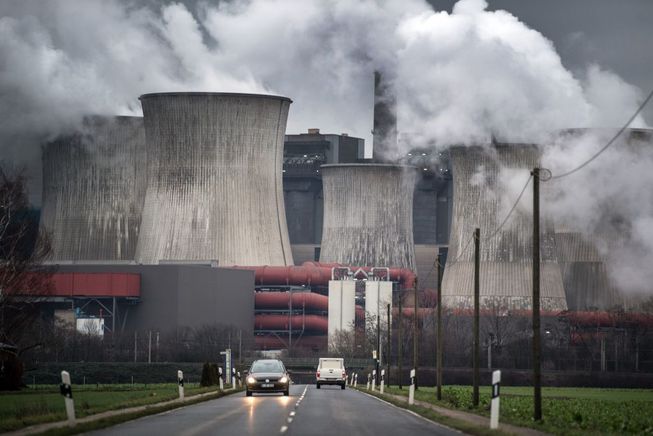Germany says it’s kicking the coal habit
Germany has plans to leave coal in the cold by 2038, provided the country’s ruling coalition takes up the recommendations of a government-appointed commission.
The recommendations, hammered out following a 21-hour marathon negotiation session held Jan. 25 and Jan. 26 among government officials, industrialists, union representatives, scientists and environmentalists, would result in one of the world’s largest consumers of coal shutting down 84 coal-fired plants and putting even more emphasis on renewable energy. The recommendations are intended to help Germany meets its commitments to fighting climate change under the Paris agreement.
Overcoming energy struggles
Germany had long viewed itself as a nation committed to combating climate change, according to The Los Angeles Times, but it ended up missing benchmarks to reduce it CO2 emissions under the Paris agreements. For instance, the next important benchmark in 2020 called for a 40 percent reduction in CO2 emissions compared to 1990. Germany is likely to only be at a 32 percent reduction by next year.
However, shutting down its coal plants means that Germany may likely meet its targets for 2030 and 2050, reductions of 55 and 80 percent, respectively.
 A view of the Boxberg lignite coal-fire power station near German town Weisswasser. Germany once did well at reducing its CO2 emissions but the country has started to lag behind on its goals. (Photo: Barbara Laborde/AFP/Getty Images)
A view of the Boxberg lignite coal-fire power station near German town Weisswasser. Germany once did well at reducing its CO2 emissions but the country has started to lag behind on its goals. (Photo: Barbara Laborde/AFP/Getty Images)
Currently, German produces 40 percent of its electricity using coal. With the country’s decision to shutter its nuclear plants following Japan’s 2011 Fukushima disaster, the recommendations would mean that renewables, like solar and wind, would need to account for 65 to 80 percent of the country’s energy by 2040.
Twelve of the country’s 19 nuclear plans have closed so far.
“The whole world is watching how Germany — a nation based on industry and engineering, the fourth largest economy on our planet — is taking the historic decision of phasing out coal,” Johan Rockström, director of the Potsdam Institute for Climate Impact Research, told The New York Times.
“This can help end the age of finger-pointing, the age of too many governments saying: Why should we act, if others don’t?” Rockström continued. “Germany is acting, even if the commission’s decision is not flawless.”
What’s the plan?
 Clouds of water vapor rising from the cooling towers of the Jaenschwalde lignite coal-fired power station in the Lusatian region of East Germany. The recommended coal phase-out plan calls for investment in coal-dependent regions. (Photo: Barbara Laborde/AFP/Getty Images)
Clouds of water vapor rising from the cooling towers of the Jaenschwalde lignite coal-fired power station in the Lusatian region of East Germany. The recommended coal phase-out plan calls for investment in coal-dependent regions. (Photo: Barbara Laborde/AFP/Getty Images)
Appointed by Chancellor Angela Merkel, the commission has spent the past seven months attempting to craft a road map away from coal that would satisfy the various competing interests. The plan, which is expected to be adopted by Merkel’s government and the country’s regional states, includes several aggressive steps. By 2022, a quarter of the 84 coal-powered plants in the country should be closed, amounting to about 12.5 gigawatts worth of energy. The plan didn’t specify which plants should be closed, leaving that decision up to the utility companies.
A review process will occur every three years to see how the plan is progressing and whether or not the final end date should be moved. The commission said the proposed 2038 end date could potentially be moved to 2035, depending on the findings of the 2032 review.
According to the Associated Press, Merkel has already stated that Germany will likely import more natural gas than it currently does to help offset the loss of coal while renewable sources get up and running. Natural gas emits less CO2 than coal.
Missing from the road map is a sense of how much removing coal from the country’s energy plan would cost, but the panel did recommend that 40 billion euros ($45.6 billion) be invested in coal-dependent areas over the next 40 years. The money is intended to help transform the 20,000 jobs directly connected to coal and the 40,000 jobs indirectly connected into new employment opportunities. Another 5,000 government jobs are expected to be relocated or created in the areas hardest hit by the phaseout, North Rhine-Westphalia in the west of the country, and in Brandenburg, Saxony-Anhalt and Saxony in the east.
 New jobs will need to be created to replace those lost as Germany eliminates coal from its power grid. (Photo: Patrick Pleul/AFP/Getty Images)
New jobs will need to be created to replace those lost as Germany eliminates coal from its power grid. (Photo: Patrick Pleul/AFP/Getty Images)
The panel also recommended that at least 2 billion euros a year be set aside to limit the increase in German power bills, which are among the highest in Europe. The 2022 review will determine the exact amount. Critics of the proposed plan told Reuters that it would likely raise electricity prices regardless, and that, given the the country’s drive to reduce CO2, coal would’ve been phased out over the natural course of time.
“There was absolutely no need to think about an exit from coal with a fixed end-date. It was coming anyway,” Christian Lindner, leader of the pro-business Free Democrats, told Reuters.
Both the regional investment and the attempts to control German power bills are intended to prevent widespread protests like France’s yellow vest protests, which began in part due to a new green fuel tax enacted by French President Emmanuel Macron. Additionally, Brandenburg and Saxony both have regional elections this year, and the far-right party Alternatives for Germany has been polling well in the regions, in part due to its platform of keeping mines open for as long as there is coal. The investments could be a way to minimize the party’s impact during the elections.
 Students walk with banners and placards during the ‘Fridays for Future’ protest against coal and for climate protection, on Jan. 25, 2019 in Berlin, while the commission negotiated. (Photo: Odd Andersen/AFP/Getty Images)
Students walk with banners and placards during the ‘Fridays for Future’ protest against coal and for climate protection, on Jan. 25, 2019 in Berlin, while the commission negotiated. (Photo: Odd Andersen/AFP/Getty Images)
Still, the German population on the whole seems keen to remove coal from the power supply. Seventy-three percent of Germans polled by public broadcaster ZDF support a quick reduction in coal power.
“This plan will make it possible to achieve climate change goals set by the German government, but it will also, and this is important, achieve affordable and secure energy supplies if the German government implements our recommendations,” Barbara Praetorius, an environmental professor who served as one of the four leaders of the commission, told The New York Times.

